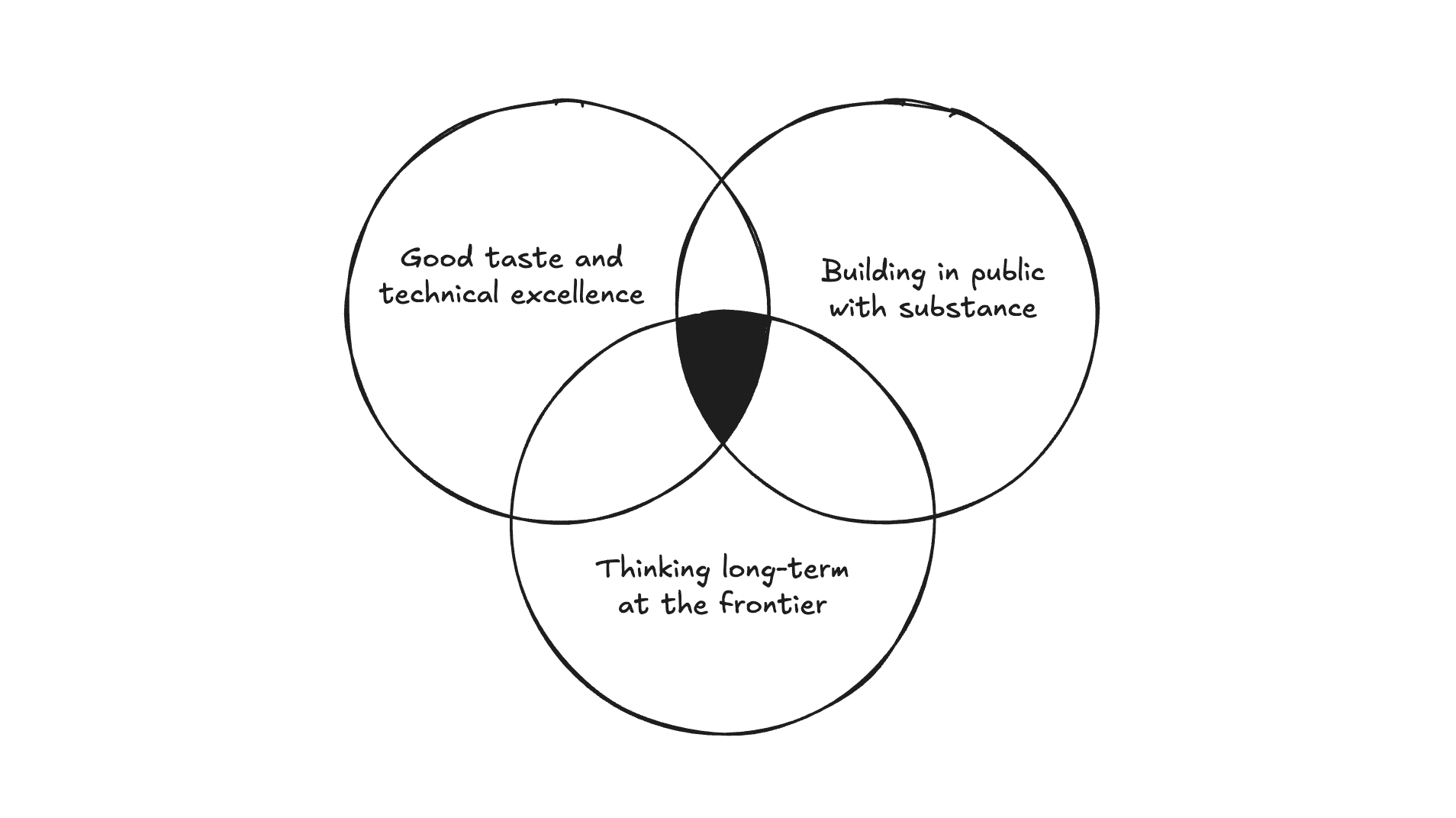Characteristics of teams we admire



It’s hard to do something great if you don’t know what greatness looks like. For this reason, we pay close attention to the tools we use and the teams that build them.
Whenever we’re unexpectedly delighted, we capture and share that moment. Then we work to understand why we felt that way and explore how we can do the same for our customers. We've identified three trait-pairs that consistently stand out among the teams building the tools we admire.
Good taste and technical excellence
Having good taste is necessary but not sufficient. It must be paired with technical excellence.
Good taste is needed because problem-solving always starts with why and taste is the ability to discern what matters. Without taste it’s impossible to answer why correctly. If you don’t answer why correctly, you’re bound to make the wrong tradeoffs.
Technical excellence ensures the product works as you expect. Doing this is surprisingly hard—anyone who’s built anything knows this. It’s hard because simplicity requires being detail-oriented, and getting every detail right is technically challenging.
You can tell when a team has good taste and technical excellence by how their product feels. Workflows become second nature and bugs bring you genuine surprise. Using their product immediately raises the bar for every other product you use. Visuals are easily copied, but experiences are not.
Teams with these qualities build best-in-category products that come to define their sectors. Linear, Stripe, and Mercury are examples we return to frequently. Apple circa 2010. Vercel’s design engineering team.
Building in public with substance
Building in public is more than just showcasing your product. It’s about communicating the context you’re operating in and the tradeoffs you’re making. Instead of shilling your product, you’re sharing your experience and learnings. This attracts like-minded folks. It’s how you create philosophical resonance.
We've noticed a strong correlation between teams who build in public and those who bias for action. This is unsurprising, as the two build on each other. The more you share, the faster you learn. The faster you learn, the more you can iterate. And building anything ultimately comes down to iteration velocity.
Velocity is speed plus direction. Writing gives you that direction by forcing clarity about why you’re building something. Starting with why creates coherence and enables definite optimism: belief grounded in reason. Indefinite optimism—belief without clarity or rigor—is just noise.
PostHog’s handbook has been a source of inspiration for us. Phil Mohun of Bright Moments and the Node Foundation is thoughtful and incisive. So are Jake from $QR and Steph from Obsidian. Themes and concepts they’ve discussed pop up repeatedly in team conversations.
Thinking long-term at the frontier
Having taste, being technically excellent, and building in public with substance get our attention, but it’s combining long-term thinking with experimentation at the frontier that sustains it. This is a personal outlook—there are solid, boring products that keep the world moving. Our team, however, is drawn to the newly possible. This is why we build on Ethereum.
Taking a long-term view at the frontier means creating the map while you’re sailing. It requires changing tack with the winds while remaining laser-focused on a clear, long-term goal. Thinking long-term requires conviction, an increasingly rare trait as information becomes abundant.
We love learning about teams taking advantage of structural differences and making things that couldn’t exist otherwise—teams that balance first principles reasoning with listening and responding to their customers.
We're drawn to teams with these characteristics because they align with our own values and aspirations. If you admire these traits too, come build with us.
At Splits we're building institutional-grade banking that's instantly available to everyone in the world. Built on Ethereum. No account minimums, paperwork, or legal entity needed. Sign up today.